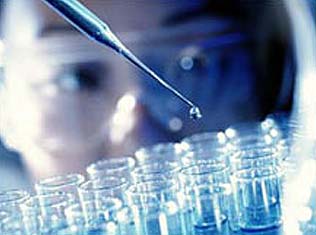| HOME | Links | More news | Gallery | Site Map | Search in Google | Search in CrocusBank | Contact us |
|
|
||||
|
7. Phytochemical Characterisation (part of WP-05) Saffron major constituents are crocins, picrocrocin and safranal, which are responsible for its colour, taste and aroma, respectively. Quality control of saffron is based on chemical analysis that should discriminate such different compounds. Except for the method currently recommended by the International Standardization Organization, namely UV-Vis Spectrophotometry, information on the chemical composition is derived by HPLC combined with spectroscopic detection means (diode array, MS). Chemical composition of the polar fraction extracted from the stigmas of wild Crocus species will be characterized by the means of UV-Vis and HPLC-UV techniques. Further investigation on the chemical composition of stigmas of species with particular commercial interest will be based on the examination of other extracts (petroleum ether, diethyl ether, acetone, methanol, water). A typical UV-Vis profile of C. sativus extracts will be constructed for each of the different extracts and will then be used as a reference one for the characterization of the wild species. UV-Vis spectra derivatives of the individual extracts are also expected to highlight any deviation from the typical profile of C. sativus. In all cases, the quality parameters suggested by ISO 3632-2 (2003) such as colouring strength, bitterness and safranal content will be also determined. Main target of this work is finally the identification of constituents that could be a discriminative key for the characterization of different Crocus species to appreciate the extend of diversity of various geographic or genetic groups cultivated and wild. |
 |
The essential oils (EO) content of the Crocus stigmas will be determined and the chemical composition of the produced oil will be characterized by using chromatographic and spectroscopic techniques such as GC-FID, GC-MS FT-IR, FT-Raman and UV-Vis. The hydrodistillation and the microsteam distillation - extraction to organic solvent will be used as reference methods for the production of EO. The ultrasound based assisted extraction and the microwaves based distillation will be the innovator methods for the EO production. These methods are expected to limit the time demand for the oil isolation receiving similar quality oil with the conventional methods and in some cases to improve the quality of the produced oil, especially by receiving enriched in active components extracts. The influence of temperature, solvent, frequency and time to the EO production will be taken into account in order to obtain the highest EO yield. Experiments will be performed with different solvents in variable extractable times, using ultrasound or microwaves apparatus, which will be functioning at specific frequency. Extractions based on ultrasound will be performed at room temperature, while the distillations based on microwaves will be rapid, so the creation of by-products, due to oxidation processes, will be avoided. Main target of this work is finally an essential oil product with high quality chemical profile. In addition, the possibility of the essential oil discrimination between different plant species, subspecies, or chemotypes by their FT-IR and FT-Raman spectra has been examined. |
|
| Implementation | |
| This task will be carried out by Partners 2 and 3 (quality, essential oils, molecular modelling), and 8 (aromatic, dying, other chemicals of industrial interest), with the assistance of partners 0 , 12 and 13 (bioactive chemicals). | |